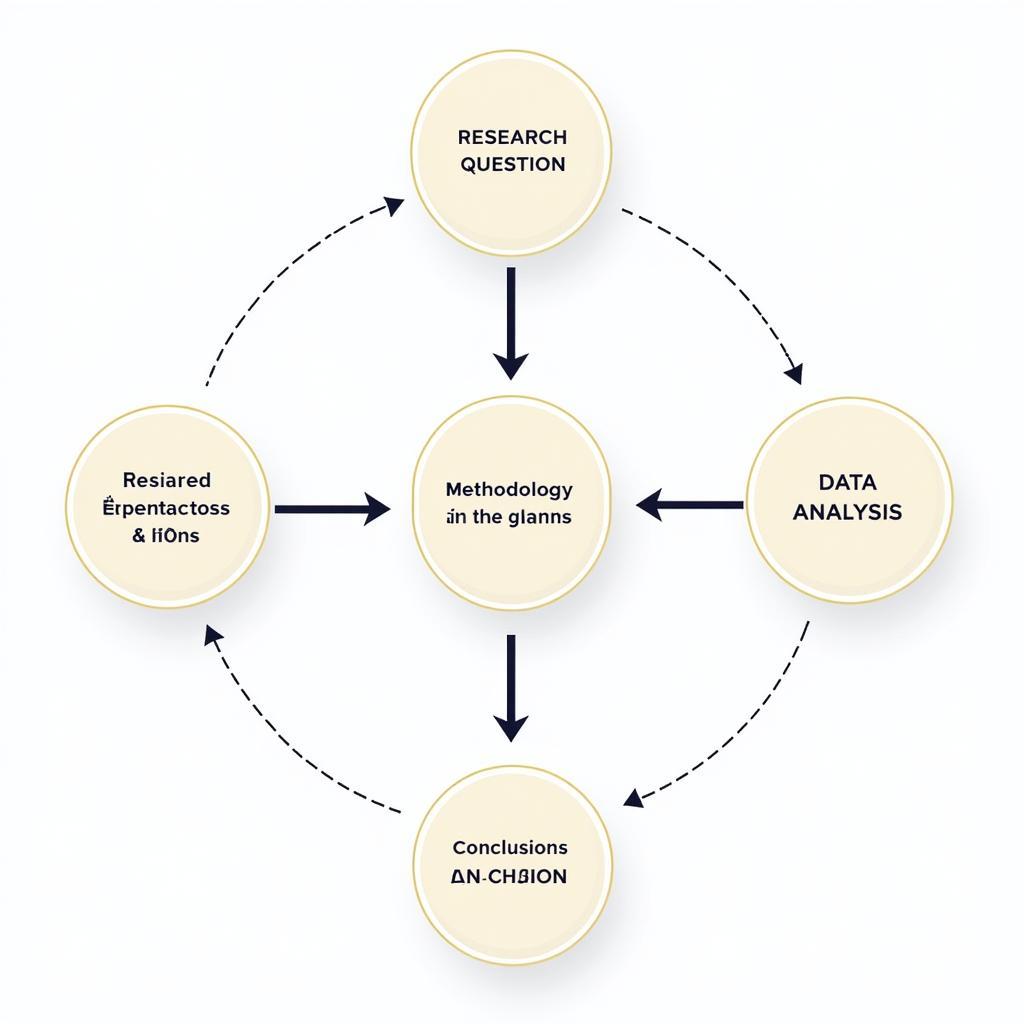A Research Framework Example provides a structured blueprint to guide your investigation, ensuring clarity, focus, and impactful results. Whether you’re delving into the mysteries of spontaneous human combustion or the complexities of ancient curses, a well-defined framework is crucial for navigating the enigmatic world of paranormal research.
 Research Framework Elements
Research Framework Elements
Why is a Research Framework Essential in Paranormal Investigations?
Paranormal research often grapples with subjective experiences, anecdotal evidence, and elusive phenomena. A robust research framework brings much-needed rigor and organization to this challenging field. It acts as a roadmap, guiding your investigation and helping you avoid common pitfalls, such as confirmation bias and data manipulation.
Imagine investigating a supposedly haunted library. Without a framework, you might be tempted to focus solely on collecting EVP recordings or chasing shadows. However, a structured approach would encourage you to delve into the library’s history, interview witnesses, and explore environmental factors that might contribute to the reported phenomena.
Deconstructing a Research Framework: Key Components
A comprehensive research framework typically includes the following components:
-
Research Question: This is the central question driving your investigation. For instance, you might ask, “What evidence supports the claim of spectral apparitions in the abandoned Blackwood Manor?”
-
Literature Review: This section involves examining existing research and theories related to your topic. This could include historical accounts of hauntings, scientific studies on electromagnetic fields and their potential influence on human perception, or psychological analyses of paranormal experiences.
 Paranormal Research Literature Review
Paranormal Research Literature Review
-
Methodology: Here, you outline the specific methods you’ll use to collect data. Will you rely on interviews, observations, experiments, or a combination of techniques? For example, you might decide to conduct EVP sessions, take EMF readings, and use thermal imaging cameras to investigate the Blackwood Manor.
-
Data Analysis: Once you’ve gathered data, you need a system for analyzing it. This might involve transcribing interviews, identifying patterns in EMF fluctuations, or comparing thermal images to rule out natural explanations.
-
Conclusions: Based on your data analysis, you draw conclusions that address your initial research question. It’s crucial to remain objective and avoid drawing definitive conclusions that your data doesn’t support.
Example Research Framework: Investigating Poltergeist Activity
Let’s say you’re investigating a case of suspected poltergeist activity in a private residence. Here’s a simplified research framework example:
Research Question: Is there evidence to support the claim of poltergeist activity in the Smith residence?
Literature Review: Explore existing literature on poltergeists, including psychological explanations, environmental factors, and documented cases.
Methodology:
- Interviews: Conduct structured interviews with the residents to gather detailed accounts of the phenomena.
- Observations: Conduct observations within the home, documenting any unusual occurrences.
- Environmental Monitoring: Use EMF meters, temperature sensors, and other equipment to monitor the environment for fluctuations or anomalies.
Data Analysis:
- Analyze interview transcripts: Look for patterns, consistencies, and potential psychological factors.
- Correlate environmental data with reported events: Determine if there’s a correlation between EMF spikes and object movements, for instance.
- Rule out alternative explanations: Consider natural occurrences, hoaxes, or misinterpretations.
Conclusions: Based on the analyzed data, draw conclusions about the likelihood of poltergeist activity, acknowledging any limitations or unanswered questions.
The Importance of Ethical Considerations
Ethical considerations are paramount in Paranormal Research. Always obtain informed consent from individuals involved, respect their privacy, and avoid causing harm or distress. Remember, you’re dealing with people’s lives and experiences, not just intriguing mysteries.
Conclusion
A well-defined research framework is an indispensable tool for any paranormal investigator seeking credible answers. By providing structure, clarity, and a systematic approach, a framework empowers you to navigate the unknown with greater confidence and contribute meaningfully to the ongoing quest for understanding the paranormal.